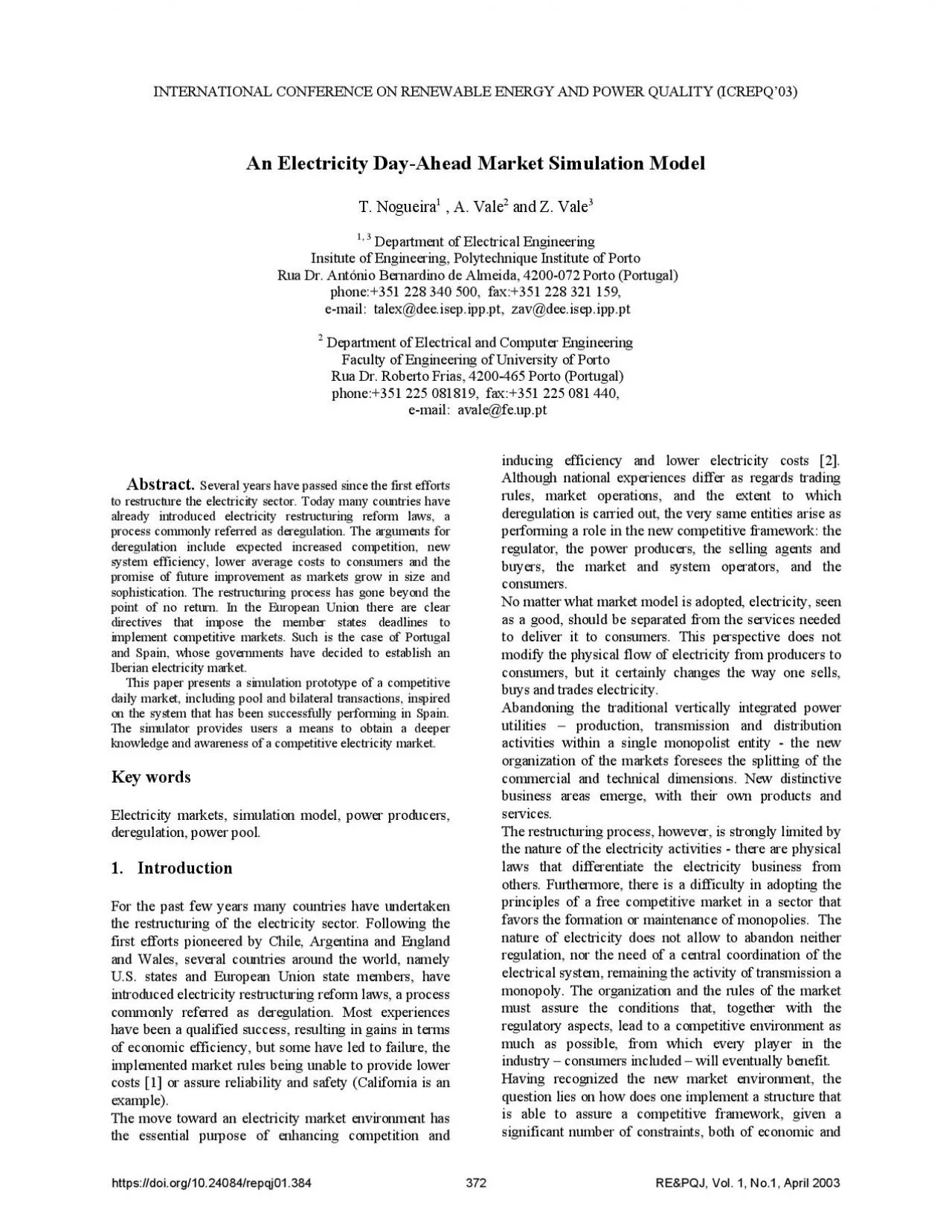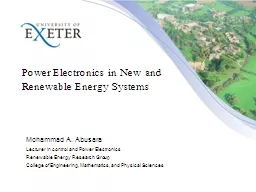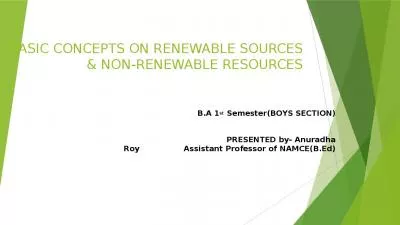PDF-INTERNATIONAL CONFERENCE ON RENEWABLE ENERGY AND POWER QUALITY ICREPQ1
Author : isabella2 | Published Date : 2021-09-11
httpsdoiorg1024084repqj01384REPQJ Vol 1 No1 April 2003372technical nature As suggested by Flechner 3 one can consider the electricity sector as having two dimensions
Presentation Embed Code
Download Presentation
Download Presentation The PPT/PDF document "INTERNATIONAL CONFERENCE ON RENEWABLE EN..." is the property of its rightful owner. Permission is granted to download and print the materials on this website for personal, non-commercial use only, and to display it on your personal computer provided you do not modify the materials and that you retain all copyright notices contained in the materials. By downloading content from our website, you accept the terms of this agreement.
INTERNATIONAL CONFERENCE ON RENEWABLE ENERGY AND POWER QUALITY ICREPQ1: Transcript
Download Rules Of Document
"INTERNATIONAL CONFERENCE ON RENEWABLE ENERGY AND POWER QUALITY ICREPQ1"The content belongs to its owner. You may download and print it for personal use, without modification, and keep all copyright notices. By downloading, you agree to these terms.
Related Documents














